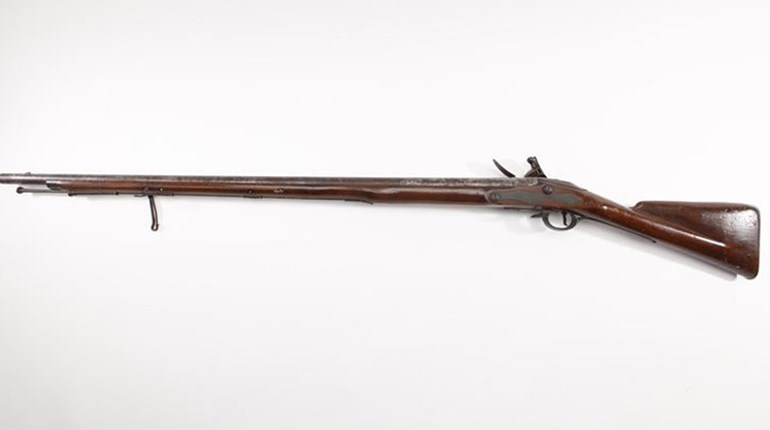
For this week's #ThrowbackThursday, we're traveling back to the October 2004 print edition of NRA InSights for a look back at the changes taking place in the National High School Rodeo Association's National High School Finals Rodeo.
It’s a timeless image of the American Southwest—a dust-covered cowboy, hard at work under a relentless sun, astride the kind of tall horse only a big man dares ride. You know his six guns are somewhere under the parched duster, but the lever-action rifle is always prominent, ready for work at a moment’s notice.
You couldn’t ride the plains without knowing how to use your gun, and your life often depended on it. That’s what makes rodeo and marksmanship such a natural mix. And for the first time in its 56-year history, participants at July’s 2004 National High School Finals Rodeo in Gillette, Wyoming, had the opportunity to showcase those skills.
The competition didn’t have anything to do with high noon either. Participants dueled it out for scores—under the watchful eyes of the National Rifle Association’s Youth Programs Department and Competitive Shooting Division—using lever-action Henry Rifles that held true to tradition.
Each state or province selected a two-person team (boy or girl) to send to the event. For the 2004 championship, there were 90 contestants from 32 states, four Canadian provinces and even a team from Australia. On Tuesday afternoon everyone, including parents, sponsors and state directors, traveled the short distance from the rodeo arena to the Gillette Gun Club to see just how well-rounded these modern-day cow folks were.
The event began with a safety and equipment briefing by Matt Szramoski, manager of NRA’s youth programs. One of the reasons shooting is one of the safest sports around is because safety is always priority number one. Henry Repeating Arms provided 20, Model H001 .22-caliber lever-action rifles. Hearing and eye protection for contestants came from Kennecott Energy and Cordero-Rojo Mine, and the Gillette Gun Club provided ammunition.
Each shooter was required to shoot 20 record shots, at 50 yards, in 30 minutes from the offhand (standing) position, using the NRA’s A-31X target. Conducted according to the NRA’s light rifle rules, shooters were allowed to use one bull as a sighting bull and then four bulls for the record shots.
After a short rain delay, the competition ended with only 25 points separating the top four teams. Kacey Griffith and J.D. Hays from Alberta, Canada took first-place honors. Second-place went to Dustin Coltrane and Hutch Eckerson from North Carolina, and in third was Josh Hudson and Wyatt Sasser from Texas. The Canadian shooters each received a Gist belt buckle—specially designed for this event—and a $2,000 scholarship. A total of $5,000 in scholarship money was awarded to the top teams.
Everyone is looking forward to next year’s championship shooting event. Just as with the steer wrestling, team roping and cutting, a shooter must qualify to attend and represent their state or providence. In 2004, Louisiana sponsored a shooting match to select its team. In the future, other states may sponsor qualifying matches and the NRA’s Competitive Shooting and Youth Programs Department is more than willing to offer assistance with any aspect of running the match.
Coupling the National High School Finals Rodeo with competitive shooting not only holds true to rodeo’s legacy, it reinforces the fact that there are some incredible young marksmen on their way up—names we may see much more of in the future.






































